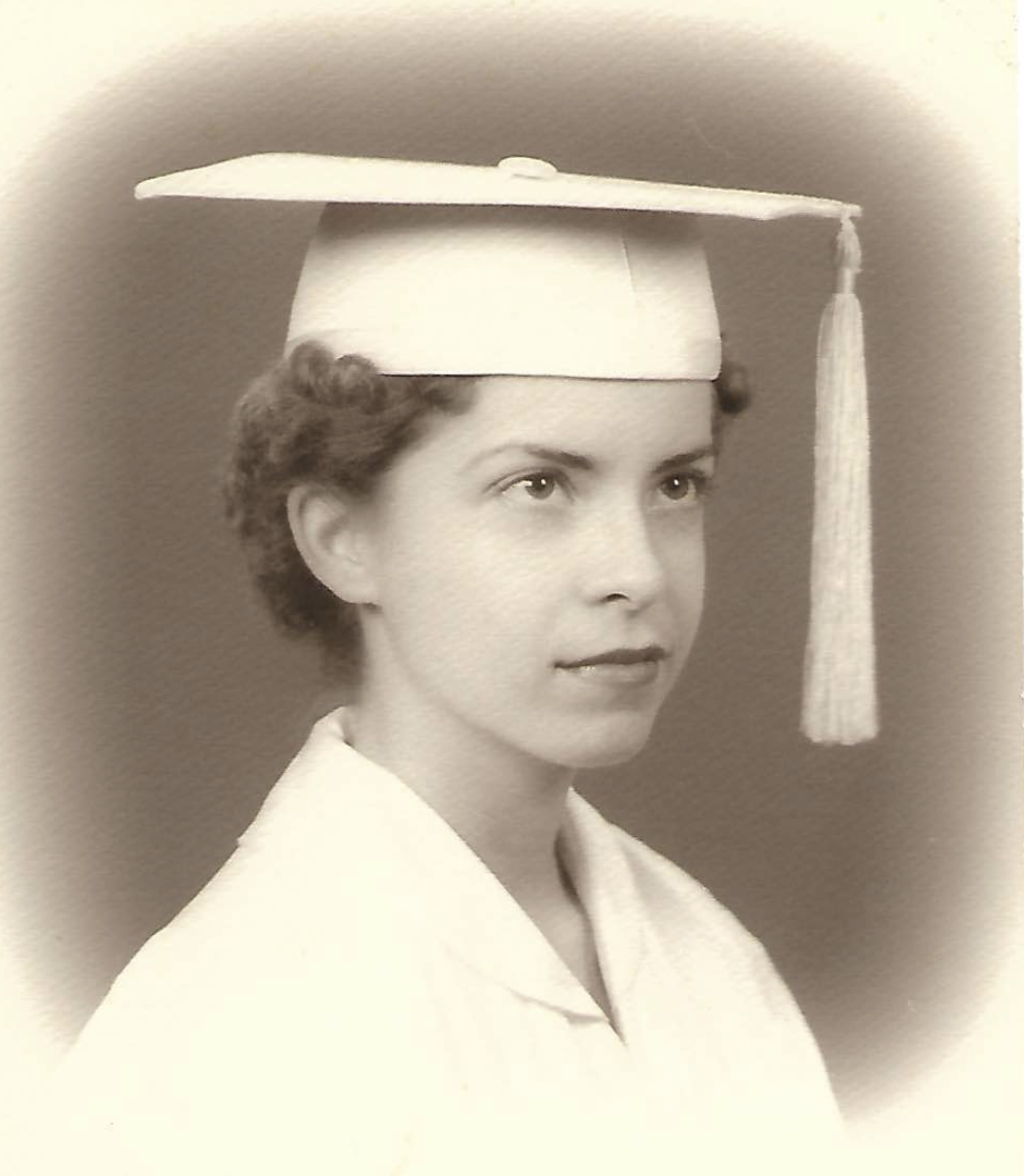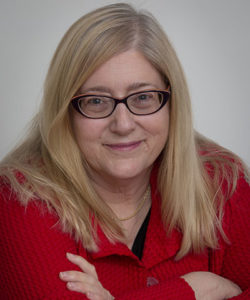Sexuality Down the Decades
The 1940s: Good Little Girls Don’t . . .
One of my earliest memories is sitting on the floor in a doorway; I am three or four. It must have been a typically hot and humid Florida day, and it was before air conditioning. I am wearing only panties. My hand must have slipped inside them. Perhaps it felt good. An adult hand swooped down, and pulled my hand out from the panties, and then spanked it. “We don’t do that,” is what I remember hearing.
The 1950s: Adolescent Hormones
My most vivid memories of pre-adolescent and adolescent years are centered on the Southern Baptist church that was my family’s “church home.” My family went three times a week, of course, on Sunday morning, Sunday evening, and on Wednesday evening. I was active in the church youth group. Because our church was downtown, members came from all over the city. I had church friends from several different high schools. Looking back, perhaps it’s not surprising that it was with church friends that I first began to explore sexual urges. At school, I’m sure that most people grouped me with other “brainy, nerdy” types; I was definitely not on the hot date list of any boy at my high school. At church, we were all God’s children, free of the labels that governed our school lives.
And even more important, there were so many opportunities for touching at church. Hands might brush as you shared a hymnal. You could sort of lean into a friend when you were jammed into a car with a group of teens driving together to some church event, or as you sat back in a church pew for one of our minister’s story-filled sermons. With a bona fide boyfriend, you could even skip the service, and find a quiet, dark space to neck. Bill and I liked to visit the staircase that led to the baptismal font, high up behind the choir loft. Necking at church was exciting but chaste; all through high school my friends and I wore girdles, so as not to jiggle when we walked. Fashion in the 1950’s protected virginity; the girdles functioned as a kind of acrylic chastity belt.
The Early 1960s: When Everything Changed
When Everything Changed is the title of a book published in 2009 by NY Times Columnist Gail Collins. Sub-titled The Amazing Journey of American Women from 1960 to the Present, the book is social history. Collins reminds us of the wide variety of forces that shape women’s behavior—politics, fashion, popular culture, economics, sex, families and work, among others—and how rapidly these forces have changed over the last fifty years. In 1960, when American culture began the series of significant shifts charted in this book, I was eighteen, and leaving home for college. For the first time, I would be making all my own decisions, out from under the watchful eyes of my extended family. However, those eyes were replaced by school rules, and those rules were fairly strict. At the time, my liberal arts college was affiliated with the Florida Baptist Convention, and exceedingly conservative. Weekday curfew for female students was 9:30 PM. There was no dancing on campus. A can of beer in one’s possession was grounds for expulsion. And weekly chapel was mandatory.
Now I don’t remember specific rules at school concerning sexual behavior, but the norms were definitely clear. What I remember is the stalemate between sexual desire and the certain knowledge that if I became pregnant I would likely be kicked out of school. And it was not easy to avoid pregnancy if one had sex. Collins reminds us, “In the 1960s, in most states, the age of adulthood was 21, and it was illegal for a doctor to prescribe birth control to an unmarried woman under that age without a parent’s consent.” I remember only three sexual relationships while I was in college and all three were brief. The first was with a young man who went to the University of Florida at Gainesville. We had met while working summer jobs at a Burdine’s Department Store. Shortly after losing my virginity, I lost interest in him. I remember his anxious phone calls to my college dorm. He had heard that “once a woman has had ‘it,’ she will do anything to have more of it,” and he was worried about me.
The second was with a handsome, well-to-do, Stetson student who I dated for a short time my senior year. Earl had a car, and an off-campus apartment, and we both enjoyed our time together. The third relationship is a bit embarrassing to look back on. After I graduated from Stetson, I stayed on to teach in a summer program for bright, rising high school juniors and seniors. Somehow I fell for one of these students. Now, John, as I will call him, was way too young for a car and an off-campus apartment. We took our pleasure where we could find it, which generally happened to be on the quiet grounds of a local cemetery, under the shelter of darkness, between dusk and curfew. I have a memory of returning to the Women’s Dorm where I resided and finding brambles stuck in my skirt. Sometime during this summer I was called into the office of the Professor who supervised this summer program. “It has come to my attention that there are rumors concerning a relationship between you and one of our high school students. Is this true?” I had the presence of mind to deny it firmly; fortunately, my bookish persona gave my denial plausibility. I have always wondered how we were found out. My best guess: my young lover was not mature enough to avoid bragging. My supervisor was kind enough to believe me, or at least pretend to.
He did not issue a warning or even comment on what I now understand—with fifty years of hindsight—to be the moral implications of faculty-student relationships. This behavior was not on the moral radar screen of academics until much later.
From time to time, during my college years, I would have a late period. If this happened during one of these brief sexual relationships, I would endure days of panic, as I waited to see if I was “safe,” or if life as I had known it was over. Looking back at these years, I see how powerful a drive sex is. The enormity of the risk I was taking when I began a sexual relationship—as big as that risk was—was an entirely insufficient deterrent to following desire.
The Late 1960s: What I Learned at Yale
I went to graduate school in English at Yale, poor as a church mouse, on an all-expenses-paid Woodrow Wilson Fellowship, one of eight students from my college to be so honored in 1964. I learned a great deal at Yale, both in and out of the classroom. I will focus here on the learnings that had to do with sexuality. One of the students in several of my classes was a tall, attractive fellow, bright and engaging, with a tremendous sense of humor. We had friends in common, and soon my crush on Charles became obvious to everyone, including Charles himself. I had yet to learn that sexual identity might be a cause for unreciprocated feelings. Charles and I became good friends, after he helped me to figure this out, and sometimes we even shared a bed, in a chaste kind of way. We were compatible, and Charles liked me as a friend, but he was gay. His lover was in England for the school year.
Charles introduced me to the gay subculture at Yale. We went to parties where I saw married professors and engaged fellow students dancing and flirting with same sex partners. I learned many things from the world Charles introduced me to. With my naiveté in tatters, I took away some powerful learnings: the first being that things aren’t always what they seem to be. I was to relearn this lesson repeatedly over the next decades. Another learning that came from my year with Charles had to do with the harm that is caused when authentic sexual identity is closeted, and cultural norms force people to live a lie. I watched young women get engaged to men who were sexually active in the gay sub-culture; a decade later, if they were still married, they would be at risk for AIDS. And as I thought about their closeted husbands, I pondered what living a lie does to integrity and self-esteem. I hadn’t yet become a Unitarian, but I found myself accepting one of my religion’s seven principles: the inherent worth and dignity of every person. Over the years, I have come to believe that civil rights for gay, lesbian, bisexual, and transgendered people is one of the major civil rights issues of our time.
I had been oblivious to anything other than heterosexual attraction while I was an undergrad. For example, there was an apartment in one of the women’s dorms shared by the university’s top two female academic administrators. Why they might be sharing living space was never discussed or questioned. Looking back over the decades spanned by their relationship, I can now imagine a reason; in the early 1960s, I could not.
Getting Married in the 1960s: What was I thinking?
When our first year of grad school ended, in May of 1965, Charles got on the plane to fly to England, where he would rejoin his lover. At the same time, a fellow grad student, Barbara, left for Italy, to rejoin a lover there. I had spent nearly all of my free time during my first year of grad school with Charles; the friend and lover Barbara left behind was Doug—they had lived together during the latter part of the school year. Doug and I were both on a kind of rebound, and fell rather hastily into love and marriage. Within four months, an Episcopal priest in a nearby town had pronounced us man and wife.
Not that we told anybody. It was important to Doug that I be gradually introduced to his conservative Southern family. So I met them over a Thanksgiving visit. Our “engagement” was announced at the Christmas visit. And we were married to each other again nine months later, this time publicly, and in front of both our families, in my home church in Florida.
Married Sex
Married sex become pretty boring pretty quickly. I found it hard to understand why it was supposed to be a big deal. The root of the problem, of course, was that I had never had an orgasm. Neither Doug nor I had much understanding of female sexuality. I read about orgasms in the marriage advice books of the late sixties and early seventies. The key to a wife’s orgasm was generally linked to vague concepts like “the power of sexual surrender.” If only I could surrender to Doug more fully, then we would find the holy grail of simultaneous orgasms. I tried to surrender, but I guess complete surrender was beyond me.
And then, miracle of feminist miracles, I found help. In 1975, Lonnie Barbach published For Yourself: The Fulfillment of Female Sexuality. Barbach understood the anatomy and physiology of female sexuality, advocated masturbation and experimentation with vibrators as a way of exploring one’s own body, and provided a step-by-step program to frequent and intense orgasms. BookGirl!—as I was coming to think of myself—now knew what to do. And it worked, at least when I was alone. Unfortunately, what I learned from Barbach did not significantly impact my marital relationship, which ended in 1980.
Senior Sex in the 21st Century
After more than two decades as a divorced single parent, I had come to assume that I would probably be single for the rest of my life. On October 9, 2002, however, an old friend from Connecticut called. It was Bob, a friend and soul-mate from the Unitarian church I had belonged to in Connecticut. We had co-led programs in spiritual education for adults throughout the 1980s, and had known each other well at a deep, soul level. Bob’s wife had asked for a divorce, and my women friends at the Connecticut church had sprung into action when they heard the news, making sure he had my contact information in North Carolina. It had been years since we had seen each other, so I invited him to come see North Carolina. Around 7:00 PM on November 8, I was standing in the lobby at RDU waiting for Bob to deplane, when my cell phone rang. It was my son: “Mom, today is my birthday! No parent has called me yet!” And alas, this was the truth. I’d spent the day with only one focus: preparing for Bob’s visit. By the end of the weekend I was falling in love.
After Bob’s visit, BookGirl! headed for Barnes and Noble. “I’d like to see what’s new in books on sexuality for people over sixty,” I told the nice clerk in his twenties. They were on the bottom shelf of the sexuality section, so the young man got down on one knee and handed several up to me. BookGirl!’s instinct was sound: we know a lot more about human sexuality today. Witness my favorite title from this book shopping spree: The One Hour Orgasm. Bob joked that a lesser man might have been intimidated by the pile of books on senior sex he found on his next visit. For fourteen years we lived together happily as life partners, taking pleasure in similar interests and values, and grateful for the foundational relationship we built during all those years of personal and spiritual growth work in our Connecticut church. We also enjoyed our differences, and the different skills we brought to our relationship (I did our strategic planning, Bob did our cooking). Best of all, we both liked sex and treasured our sexual relationship—it was the deepest expression of the gratitude and joy at the heart of our life together.
The Wilderness of Grief, and a Surprising Gift on the Other Side
On February 25, 2016, I woke up in a silent house, confused. Where was Bob, and why hadn’t he awakened me with his usual “Get up, Sweetheart. Breakfast is ready”? I got up to look for him, and ultimately found him hidden behind the breakfast bar, his handsome body cooling on the floor. I was in shock—my life was in pieces. And thus began two painful years of a grief journey without a map. Close friends and family, neighbors and my church, have been there for me all along the painful trails through grief, supporting me as I mourned the unexpected loss of my soulmate and then as I worked to gradually reconcile myself to Bob’s absence.
When I began to emerge from the wilderness of grief, I was turning 76 years old. I had no clue of what might lie ahead. And then came an unexpected invitation, from a new friend: to a movie. I accepted the invitation, as I liked and respected Dan, having gotten to know him in a grief support group I attended in 2017. I was anxious, though, feeling very uncertain about dating at my age. I called my son before the date, “What should I do if he tries to hold my hand during the movie?” He had a wise answer: “Do what you feel like doing, Mom.” Dan didn’t hold my hand in the movie theater, though he did shake my hand at the end of our first date.
We started spending time together, and gradually began to explore our bodies. Nothing I have ever experienced, and nothing I have ever read about human sexuality, prepared me for how I have come alive sexually—indeed, bloomed in ways I didn’t know were possible—in this, my eighth decade. Bookgirl! googled “multiple orgasms,” and sure enough I wasn’t hallucinating. Moreover, my reading confirmed what I was experiencing: that orgasms can have different sources. So I am left with a question more philosophical than physical: why is it that I have come to experience—with such intensity—the physical joy of living at this late point in my life? In “Blackwater Woods,” poet Mary Oliver offers the only answer that makes sense to me:
“To live in this world
you must be able to do three things:
to love what is mortal;
to hold it
against your bones knowing
your own life depends on it;
and when the time comes to let it go,
to let it go.”


